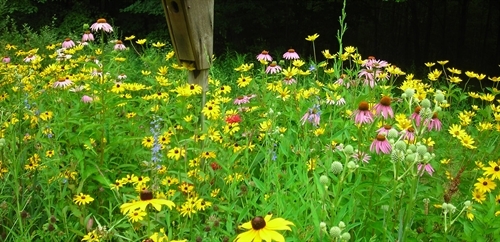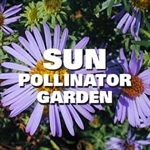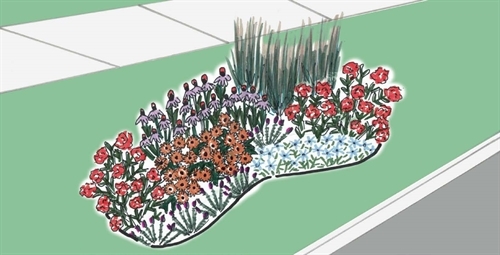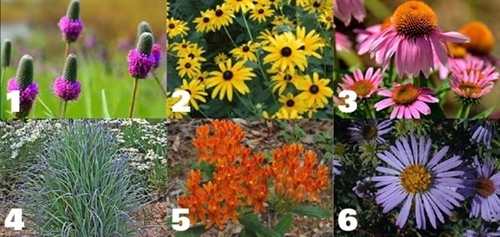There are two Parkways for Pollinators garden options: sun or shade.

Depending on the location of your garden it will contain native plants that prefer full sun or partial shade. Sun gardens need to receive 6+ hours a day of full sun to be successful. The shade gardens need only 3+ hours of full sunlight (or 4 to 5 hours of dappled sunlight) to grow.
Please note that the exact plant assortment included in each garden is subject to change based upon plant availability.




Sunshine Monarch Garden

- Size: Gardens should be approximately 4’ x 10’, in an organic shape
- Full sun is considered to be 6+ hours
- Location: Minimum of 8 feet from a tree trunk
- Pollinators attracted to sun garden:
- Long-tongued bees, short-tongued bees
- Small to medium-sized butterflies and skippers
- Silvery Checkerspot and Monarch caterpillars will feed
- Asclepias (Butterfly Weed) is a Monarch host plant for larval food and egg laying
- Sporobolus and Schizachrium will feed birds
- Rudbeckia (Showy Black Eyed Susan) feeds goldfinches, nuthatches, cardinals, sparrows
- Plants in the sun garden:
- Dalea Purpurea - Purple Prairie Clover (5 plants)
- Rudbeckia Fulgida - Showy Black Eyed Susan (2 plants)
- Echinacea Purpurea - Purple Coneflower (5 plants)
- Schizachrium Scoparium - Little Bluestem (3 plants)
- Asclepias Tuberosa - Butterfly Weed (5 plants)
- Symphyotrichum Oblongifolium - Aromatic Aster (3 plants)

- Watering requirements: Will depend on the weather conditions but the newly planted garden will need to be watered for the first few weeks at a minimum
Shade pollinator garden

- Size: Gardens will be approximately 4’ x 10’, in an organic shape
- Sun: Shade plants need 3 hours minimum of full sunlight to be relatively viable. 4-5 hours of full sun is best. 4-5 hours of dappled sunlight is okay. Not much grows without any sunlight.
- Location: Minimum of 8 feet from a tree trunk
- Pollinators attracted to shade garden:
- Carex pensylvancia (Common Oak Sedge) can host 36 species of caterpillars
- Aquilegia (Eastern Red Columbine) attracts hummingbirds, butterflies, bees, hawk moths
- Itea provides protective cover for birds
- Plants in the shade garden:
- Carex Pensylvanica – Common Oak Sedge (5 plants)
- Aquilegia Canadensis - Eastern Red Columbine (3 plants)
- Heuchera Richardsonii - Prairie Alumroot (3 plants)
- Geranium Maculatum - Wild Geranium (1 plant)
- Itea Virginica - Virginia Sweetspire (1 plant)

- Watering requirements: Will depend on the weather conditions but the newly planted garden will need to be watered for the first few weeks at a minimum.
Watering and Garden Care
- You will receive watering instructions from the Deep Roots Project.
- Your seedlings will need lots of water in first 2 weeks.
- Pull weeds before they get big.
- Native plants don‘t need to be fertilized.
Steps in the Process
- Pick a garden location.
- Arrange a meeting time with the Deep Roots Project to visit the location of the garden.
- The Deep Roots Project will help decide if it will be a sun or shade garden.
- The Deep Roots Project will visit the garden site prior to planting and will remove the grass and prepare the garden for planting.
- On the day of the planting, the Deep Roots Project will bring the plants and the tools and equipment for planting them.
- The Deep Roots Project will both lead adults and kids in planting the garden.
- The Deep Roots Project will also explain the “Healthy Lawn, Healthy Family” pledge to not use toxic chemicals on your lawns and gardens.